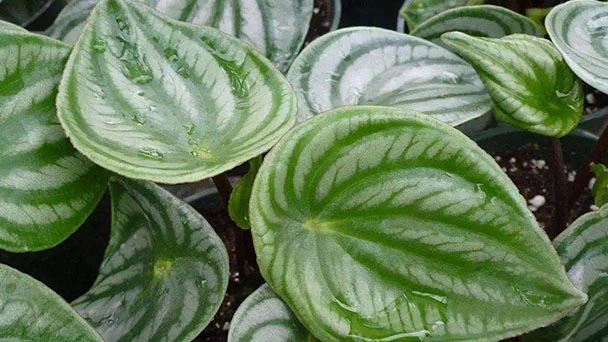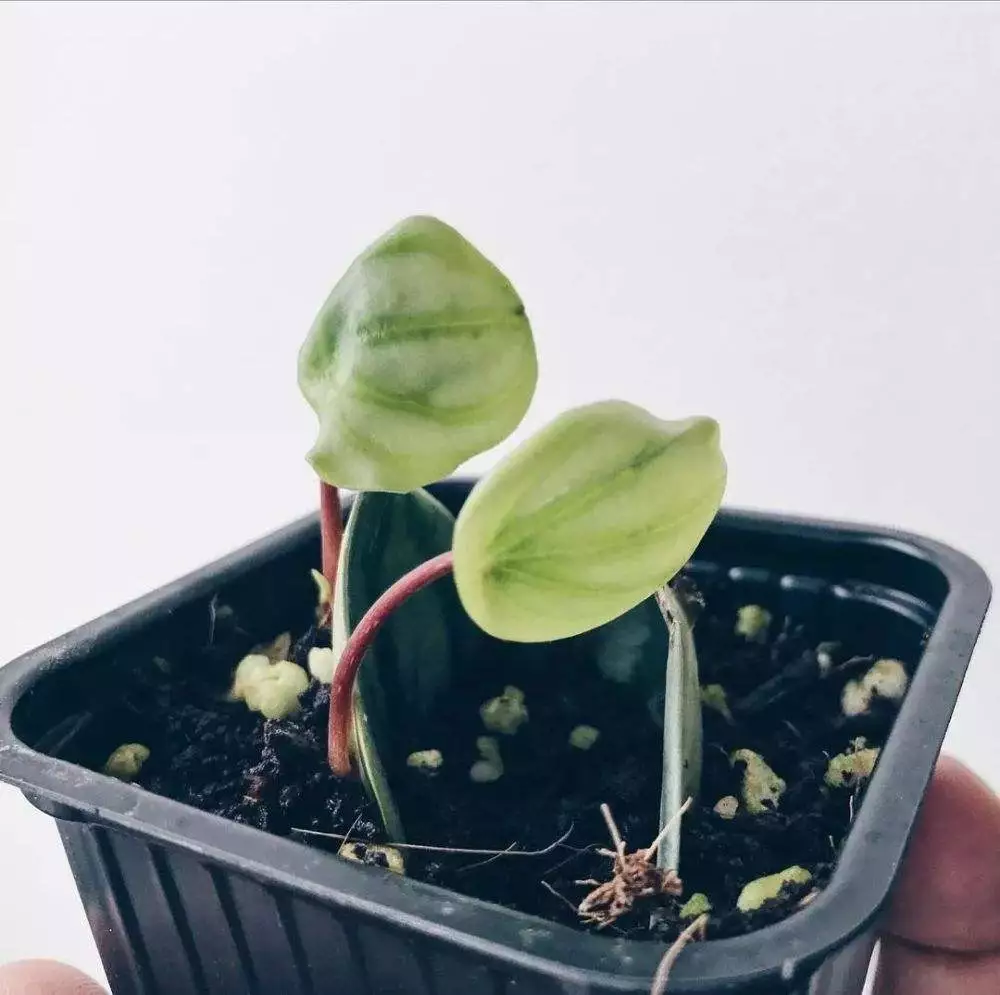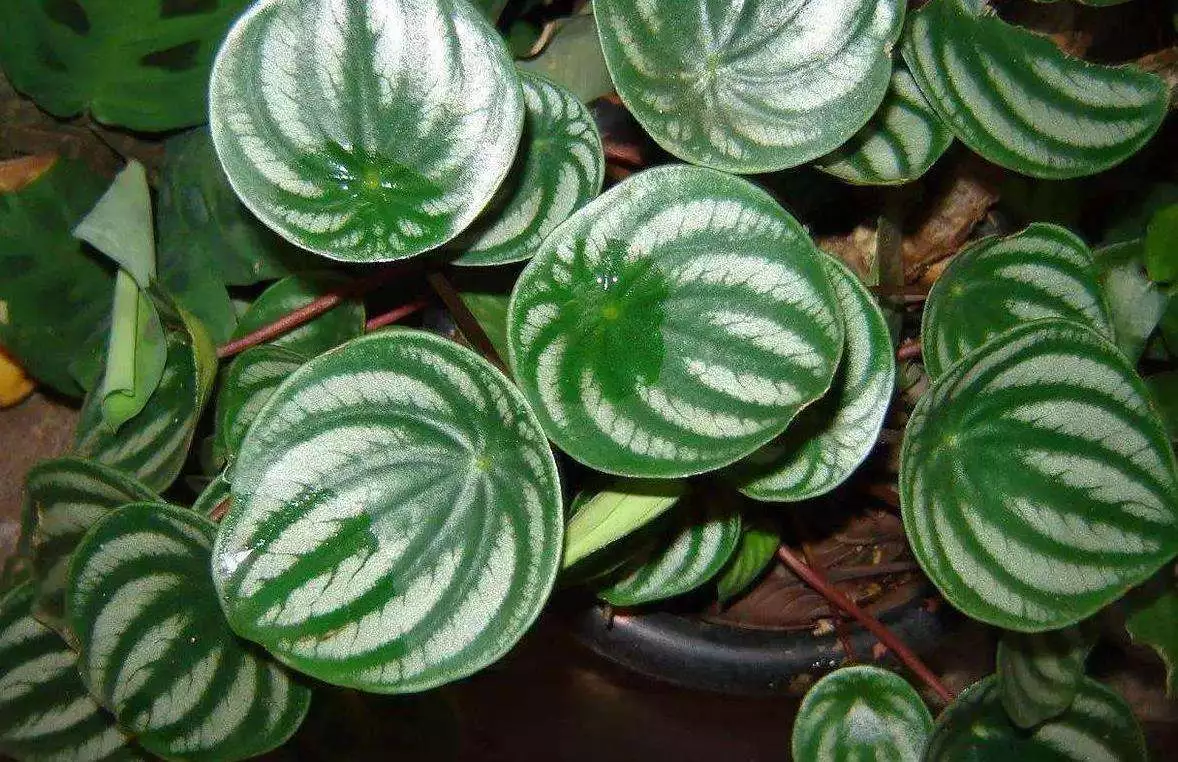Why Does My Watermelon Peperomia Leaves Drooping?
Written by Ivy
Jan 04 2022

Watermelon Peperomia is a popular variety in Peperomia, named for its leaf color like watermelon. Widely planted in the world, it is a common small foliage plant. Potted plants can be placed at the head and end of the table. The plants are delicate and lovely, fresh and pleasing to the eye. It can also be cultivated in hanging pots and hung on windowsills and balconies, free and easy, elegant and interesting. Therefore, it is also sought after by the majority of flower friends. In the process of maintenance, the phenomenon of Watermelon Peperomia leaves drooping often occurs. What is the reason for this and how to maintain it? Let's analyze the reasons for Watermelon Peperomia leaves drooping and give maintenance suggestions.
Growth habits of Watermelon Peperomia: it is native to South America and tropical regions. It likes a warm and humid semi shade environment and avoids exposure to the hot sun; It is not cold resistant. The most suitable growth temperature is 18-28 ℃. It should be shaded and cooled in summer, and the overwintering temperature is 10-15 ℃. If the temperature is lower than 5 ℃, it will be frozen; It likes deep and fertile acidic soil rich in humus. Watermelon Peperomia is a semi shade plant. The color of its leaves is as fresh and pleasing as watermelon skin. Plants are often placed in dark rooms, or in rainy and snowy weather in winter, when the indoor light is poor, the leaves of Watermelon Peperomia will droop due to lack of light, and the petiole will sag. The plant is afraid of strong light. When it is maintained on the windowsill in summer, the sun is relatively strong, and the plant is burned, resulting in leaves drooping.
Watermelon Peperomia is a semi shade plant. The color of its leaves is as fresh and pleasing as watermelon skin. Plants are often placed in dark rooms, or in rainy and snowy weather in winter, when the indoor light is poor, the leaves of Watermelon Peperomia will droop due to lack of light, and the petiole will sag. The plant is afraid of strong light. When it is maintained on the windowsill in summer, the sun is relatively strong, and the plant is burned, resulting in leaves drooping.
How Much Light Does Watermelon Peperomia Need?
What Is The Best Soil For Watermelon Peperomia? Watermelon Peperomia has large and many leaves, resulting in closed plants and poor ventilation and light transmittance. Some leaves will turn yellow when they are depressed, and the petiole will become soft and drooping when they are depressed. During the indoor maintenance of Watermelon Peperomia, the doors and windows are often closed, and the indoor air circulation will be poor, so Watermelon Peperomia will also have poor ventilation and cause leaves drooping.
Watermelon Peperomia has large and many leaves, resulting in closed plants and poor ventilation and light transmittance. Some leaves will turn yellow when they are depressed, and the petiole will become soft and drooping when they are depressed. During the indoor maintenance of Watermelon Peperomia, the doors and windows are often closed, and the indoor air circulation will be poor, so Watermelon Peperomia will also have poor ventilation and cause leaves drooping.
Growth habits of Watermelon Peperomia: it is native to South America and tropical regions. It likes a warm and humid semi shade environment and avoids exposure to the hot sun; It is not cold resistant. The most suitable growth temperature is 18-28 ℃. It should be shaded and cooled in summer, and the overwintering temperature is 10-15 ℃. If the temperature is lower than 5 ℃, it will be frozen; It likes deep and fertile acidic soil rich in humus.
Lack or Too Strong LightToo Much Water or Dry Basin SoilToo Many Blades or Poor VentilationFrequent Fertilization
Lack or Too Strong Light

- Remedial Measures: Watermelon Peperomia is often placed in a dark place, and leaves drooping has occurred. At this time, Watermelon Peperomia should be moved to a bright place for maintenance, so as to supplement light to the plant and promote photosynthesis of leaves. If leaves drooping is caused by strong light burns, move the plant to a place with bright indoor light for maintenance to avoid direct sunlight.
- Maintenance suggestions: Watermelon Peperomia likes a semi shade environment. Insufficient or too strong light is very unfavorable to the growth of plants. Therefore, during maintenance, we must pay attention to adjusting the light. 40% ~ 50% shade maintenance should be carried out from spring to autumn. Flower friends can place flower pots on the windowsill facing south or East. In summer, it is placed on the window sill facing north. If the sun is weak in winter, try to sun the plants as much as possible and place them on the sunny windowsill without shading, which is conducive to improving the basin soil temperature and making the plants survive the winter safely. Pay attention to rotating the flowerpot once a week to prevent the plant from tending to light.
How Much Light Does Watermelon Peperomia Need?
Too Much Water or Dry Basin Soil
Watermelon Peperomia likes a humid growth environment, but it is also afraid that the soil is too wet. Excessive watering of watermelon peel and charred grass and rain in the flower pot when it rains will cause soil ponding, and plant rotten roots will lead to leaves drooping. Watermelon Peperomia is also afraid of drought. It often doesn't water the plants, the basin soil is dry, the root system can't breathe well, the growth of aboveground parts can't get water supply, and the leaves will leave drooping because of water shortage.- Remedial Measures: if there is water in the basin soil, first pour out the water, then loosen the basin soil with a small rake, and finally move it to a ventilated place for maintenance to promote the evaporation of water in the basin soil. If leaves drooping is caused by drying, the first thing to do is to replenish water to the plant. Because the root system is dried for too long, the replenishment should be carried out step by step to avoid stimulating the root system and causing defoliation. At the same time, we need to add water to the leaves to make the blades recover quickly.
- Maintenance Suggestions: Although Watermelon Peperomia likes to be wet, it is also afraid of ponding in the basin soil. Therefore, watering must be carried out according to the season during propagation, and at the same time, observe whether the basin soil is short of water. In spring and autumn, the climate is warm, the plant grows fast and needs more water. Generally, water is poured once a week. After entering summer, the temperature rises very high, and evaporation requires a lot of water. Therefore, it is necessary to increase the amount of watering and keep the basin soil moist. At the same time, we need to spray water to the leaves. In winter, the temperature is low, the plants enter the dormant state, and the water required is also decreasing. Generally, water is poured every half a month to keep the basin soil slightly dry to prevent falling leaves caused by ponding and rotten roots. In the northern region, Watermelon Peperomia is maintained in the heating room in winter. When the temperature is above 15 ℃, the basin soil should be kept moist to make the leaves plump and shiny.
What Is The Best Soil For Watermelon Peperomia?
Too Many Blades or Poor Ventilation

- Remedial Measures: Watermelon Peperomia has too many and dense leaves. First, remove some old yellow leaves at the lower part together with the petiole, and cut off the over dense leaves to improve the ventilation and light transmittance of the plant. At the same time, open a window for ventilation, or move the plant to the outdoor shade for maintenance.
- Maintenance Suggestions: Watermelon Peperomia leaves are large and dense, which will block each other. If we see yellow leaves during maintenance, we can cut off the old leaves in time and cut off some of the over dense leaves, which can improve the ventilation and light transmittance of the plant and prevent leaves drooping caused by blocked leaf respiration. When planting Watermelon Peperomia indoors, you should often open windows for ventilation. You can also put Watermelon Peperomia under outdoor trees for maintenance. Good outdoor ventilation conditions can prevent leaves drooping.
Frequent Fertilization
Watermelon Peperomia has large and dense leaves. If the nutrients are insufficient, the leaves will become thinner and smaller. Therefore, nutrients need to be supplemented during the plant growth period to ensure the vigorous growth of the plant. However, the amount and concentration of fertilizer should be well controlled. If the number of times of fertilization is too much or the concentration is too high, the root system of the plant will be burned, the aboveground part will not get the nutrients and water transported, the leaves will be yellow due to water shortage, and the petioles will become soft and drooping due to water shortage.- Remedial Measures: if we fertilize Watermelon Peperomia too much and cause rotten roots of the plant, to solve this problem, we need to change the pot for the plant, trim the rotten roots when changing the pot, disinfect the roots and replant them.
- Maintenance Suggestions: Fertilizing Watermelon Peperomia should be carried out according to the growth law of the plant. Its growth period is from May to August. At this time, there is a large amount of fertilizer required. Generally, fertilizing should be applied every half a month. You can use diluted cake fertilizer solution or buy some special fertilizer for flowers in the flower market. Note that the amount of nitrogen fertilizer should not be too much. If there is too much nitrogen fertilizer, the spots on the leaves will become lighter, and the length of the petiole is different, which will affect the beauty of the plant shape. Applying fertilizer again before winter is conducive to the safe overwintering of plants. In winter, fertilization should be stopped to prevent root burning.
Latest Updated
- Benefits of Bugleweed - 7 Science-backed Health Benefits
- Bugleweed Dangers & Side Effects - Is It Poisonous?
- How to Plant Evergreen Trees - What You Should Know
- When to Plant Evergreens - Grow Guide for Evergreen Trees
- 12 Wonderful Evergreen Shrubs for Your Garden
- 12 Popular Evergreen Plants with Pictures for Beginners
- When And How To Prune A Lilac Bush Like a Pro
- How to Grow & Care for Lilac Vine (Hardenbergia Violacea)
- Japanese Lilac Tree (Syringa Reticulata) Care & Propagation Guide
- Shumard Oak Pros and Cons - What to Know
Popular Articles
- Winter maintenance of Antirrhinum Majus
- How to Grow Terminalia Mantaly Tree
- How to Grow and Care for Crossostephium Chinense
- How to grow Antirrhinum Majus in spring
- Peristeria Elata (Dove Orchid) Profile: Info & Care Guide
- Underwatered Snake Plant (Sansevieria Trifasciata) - Signs And How To Fix
- How to Care for Brazilian Jasmine Plant (Mandevilla Sanderi)
- How to Grow & Care for Graptopetalum Purple Delight in Summer
- Rosa Chinensis (China Rose): Plant Growing & Care Tips
- How to Care for Baby Sun Rose (Aptenia Cordifolia)